"Fast-paced," "high-stress," and "non-stop" are just a few adjectives to describe the world today. We're always balancing multiple objectives — family, work, recreation, exercise, health, all of which demand large amounts of physical and mental energy. Unfortunately, our efforts are not always enough, and it's easy to feel weighed down by fatigue, stress, and mental exhaustion. While rest and recovery are some of the best ways to feel restored, there may be another way to get a bit of a boost.
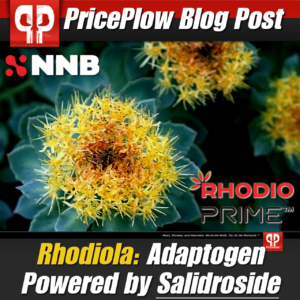
Rhodiola: The Adaptogen Powered by Salidroside. In this article, we dive deep into rhodiola, and take a different approach to the adaptogenic herb!
The market for cognitive-enhancing ingredients has exploded over the past few years, especially in sports supplements. Formulators are constantly searching for ways to inject the benefits of nootropics into their products. For example, we've seen stress-relievers and focus products grow more popular over the years and we're also seeing cognition amplifiers make their way into established supplement categories like pre-workouts, post-workouts, and sleep aids. Many brands have found that centuries-old natural herbs can augment modern supplement strategies.
Adapt to stress with adaptogens like Rhodiola
Rhodiola is one of those herbs. Known as an adaptogen, it's a substance known to help the body resist all kinds of stress - from physical to chemical and biological. Given the impact stress tends to have on everything, adaptogens provide a wide range of potential benefits.
Rhodiola is one of the most popular compounds in this category, having been used for hundreds of years to enhance mood and energy levels. Modern research supports these uses, in addition to suggesting a few new ones, such as the potential to improve symptoms of depression and improve blood glucose levels. With a multitude of capabilities, it's no wonder Rhodiola is staging a massive comeback in supplements, whether it's consumed on its own or as part of a formula!
However, not all Rhodiola extracts are the same - strength, standardization, and species all make a big difference.
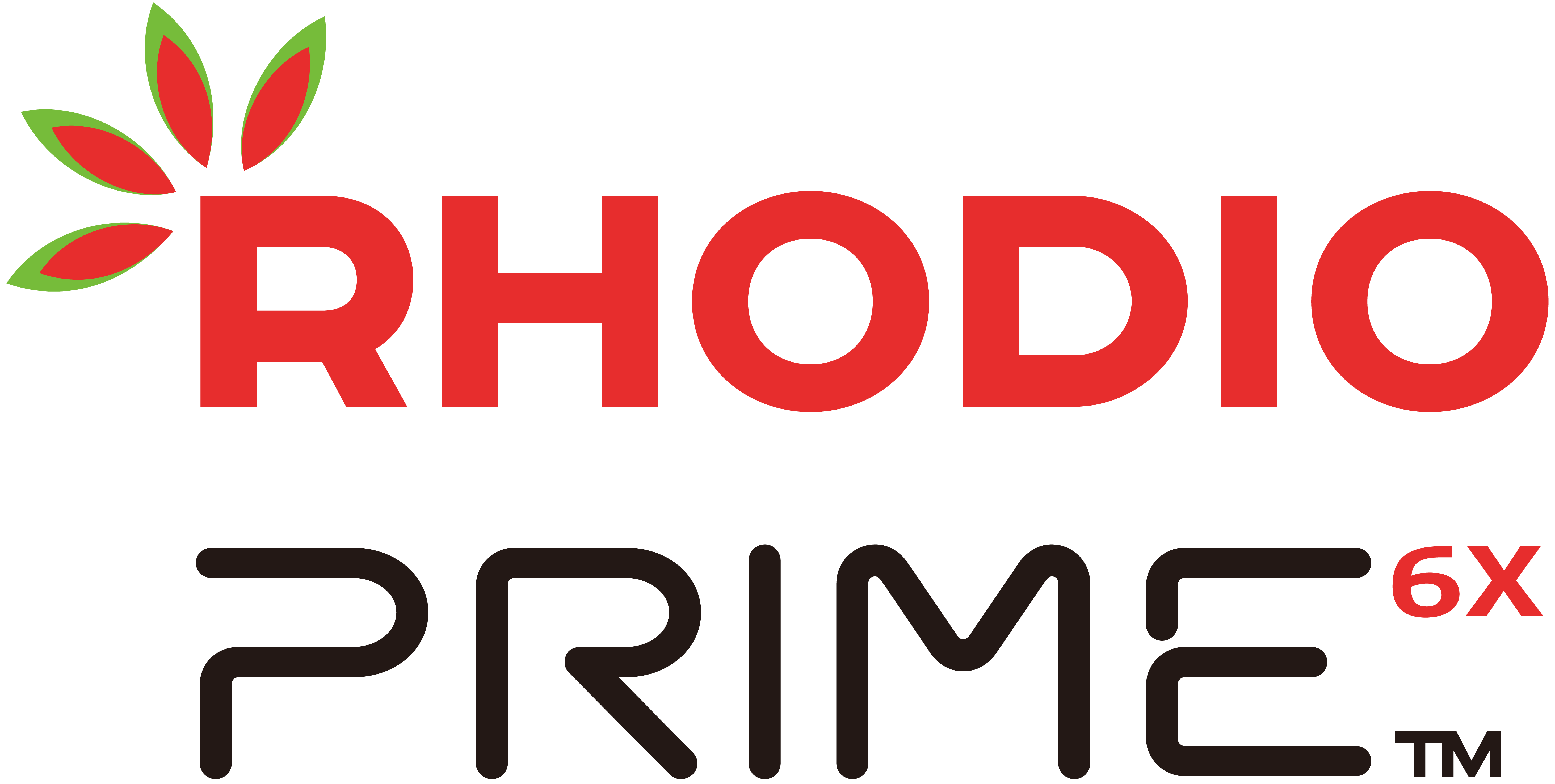
With a strong history of research, but weak extracts on the market, NNB Nutrition took it upon itself to solve the problem - with the salidroside-rich RhodioPrime 6X -- 6% salidroside!
In this post, we're driving deep into all things Rhodiola, discussing its origins, anecdotal uses, clinical research, and potential applications. We'll also touch on a unique new standardization, such as RhodioPrime 6X from NNB Nutrition, which is an interesting spin on typical Rhodiola extracts. The product possibly leverages the most active component of the herb, more than what we normally see in other products.
As always, make sure you're staying up-to-date with PricePlow. In addition to helping you find great deals on top-rated supplements, we also cover the supplement industry at large. Check us out on YouTube and our social media for the latest in supplement news, reviews, and interviews!
Subscribe to PricePlow's Newsletter and Alerts on These Topics
Rhodiola Explained: Our Video
If you'd rather fist watch and listen, then check out our Rhodiola explanation video:
What is Rhodiola?
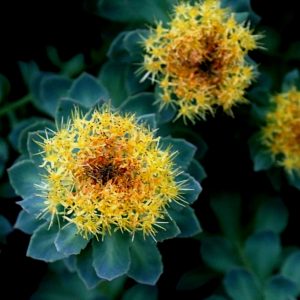
Rhodiola: Our favorite feel-good herb with some additional workout boosting properties, thanks to the salidroside inside. Image courtesy Wikimedia
Rhodiola has quite the storied past. Sometimes known as Rhodiola rosea (we'll distinguish the key variants later), this natural herb has been used anecdotally for centuries in traditional Chinese medicine (TCM), Scandanavian vikings, and several cultures in between.[1]
Native to the Crassulacea family of plants, Rhodiola is found in the high-altitude, low-temperature areas of northern Europe and Asia.[1] There are at least 20 species of Rhodiola used in traditional medicine, but Rhodiola rosea is the most widely-used and most studied, while further benefits have also been found in Rhodiola crenulata.
Anecdotally, applications of Rhodiola seem to vary quite a bit within different disciplines/regions. In TCM, it generally serves as a mood-enhancer,[2] whereas other practices have used it for fertility improvements and immune support.[3,4] It's even said that vikings utilized the plant to promote physical vitality and fight fatigue.[1]
Looking at these historical uses suggest that Rhodiola is a kind of "do-it-all" herb. While modern science has dispelled that notion, researchers have found evidence that some practices have legitimate potential. Only after separating and analyzing constituents inside the root of Rhodiola were scientists able to unveil the herb's capabilities.
Salidroside and rosavins - drivers behind potential uses
While over 140 compounds have been isolated from roots of the Rhodiola species, there are eight active compounds that help distinguish each species:
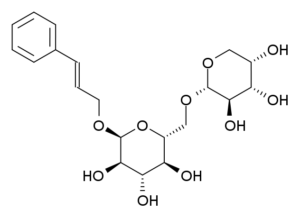
Found in Rhodiola Rosea, rosavin has too often been touted as the main constituent, but it really starts working when salidroside gets ratcheted up...
- Rosavins (rosavin, rosin, rosarin), a group of cinnamyl alcohol glycosides[5]
- Salidroside, sometimes referred to as rhodioloside[5]
- Multiple phenolic constituents (tyrosol, catechin, gallic acid)[5]
- Rhodionin, a flavonoid[5]
Of these eight main constituents, rosavins and salidrosides are the core bioactive compounds. Rosavins are what separate Rhodiola rosea from the pack, while the heavy salidroside content separates Rhodiola crenulata, respectively. Though salidroside is found in all Rhodiola plants, rosavins are unique to Rhodiola rosea.[1,5] In natural samples of R. rosea, the two compounds are typically found at a 3:1 ratio — three parts rosavin to one part salidroside.[5]
This coexistence is crucial to Rhodiola rosea's potential,[6] but science is beginning to lean on salidroside as the key driver. In isolated studies, salidroside has several benefits on its own,[7] but rosavins have failed to yield any conclusive advantages when used alone.[7] Together, however, the two compounds have been shown to be quite efficacious.[6] Research has found that the naturally-occuring ratio of the two bioactives can be quite potent in stimulating the brain,[6] but the fact that salidroside seems to drive the most successful research has led to scientists looking deeper in its direction.
Tracking long term potentiation (and thus memory and cognition)
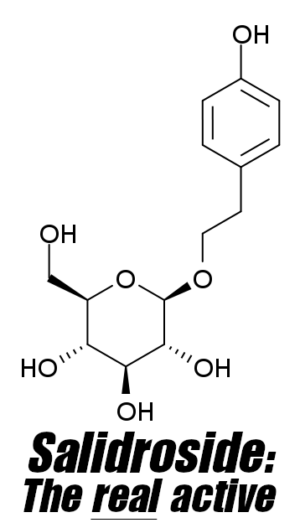
New research is showing that rhodiola extracts high in salidroside are the ones with the most potential... so why do so many supplements have such terrible standardizations? With RhodioPrime 6X, that all changes...
In a 2018 study published in Frontiers in Pharmacology, a team of researchers assessed the efficacy of various Rhodiola extracts in a synaptic model of memory. Seven different Rhodiola extracts were obtained and studied, each having different concentrations of rosavin and salidroside. All variants were tested for long-term potentiation (LTP) of synaptic transmission in mice hippocampus. The scientists analyzed the impact of both a single stimuli and burst stimuli, and then measured the population spike of pyramidal cell activity. This stimulation suggests LTP, which relates to improvements in memory and cognition.[7]
In simply comparing salidroside to rosavin, the team saw that salidroside was more effective at lower concentrations, while rosavin was superior at higher concentrations. While this suggests that either ingredient can yield some effect on its own, testing seven Rhodiola extracts allowed them to take their initial findings a step further, answering the question: "What balance of these two bioactives is superior?"
Comparing the extracts at 5 mg/L dosages, the study authors found that the Rhodiola extracts containing both salidroside and rosavin outperformed the competition.[7] Not only that, but they also saw the most cellular stimulation in the extract with the highest concentrations of both bioactives (roughly 3% of each).[7] While this ratio is more balanced than the 3:1 typically used, it highlights an important point — 3:1 rosavin-to-salidroside is where benefits begin to appear. However, to achieve even higher potency, there's a case to be made for using extracts that boast more bioactives, specifically salidroside - and such extracts are now commercially available.
Stimulating pyramidal cell activity can lead to LTP, which is considered a major cellular mechanism at the root of memory and learning.[7] This relationship emphasizes the target of Rhodiola supplementation - cognition - but it fails to discuss the primary means by which the herb acts once it's in the body. Rhodiola works as an adaptogen, fighting chemical and biological stressors in the body. This one specifically targets stressors in the central nervous system (CNS).
The many targets of salidroside
Rhodiola rosea has a number of potential benefits, most of which are driven by its salidroside content. We'll get to them soon, but to discuss its uses, we first need to understand salidroside's underlying mechanisms. After it's absorbed by the intestines via the SGLT1 transporter,[8] salidroside affects various metabolic pathways and enzymes in the body.
-
A true adaptogen: correcting the mTOR pathway
Mammalian target of rapamycin (mTOR) is an often-discussed subject in the world of sports supplements. It's a protein kinase that regulates a number of cellular functions, including cellular proliferation and cellular metabolism. Higher levels of mTOR tend to be associated with higher degrees of cellular growth and survival.[9] This effect is particularly useful when building muscle, with mTOR playing an important role in the regulation of building, repairing, and maintaining skeletal muscle.[10]
As with most things, however, there's a balance to strike. Too much mTOR activity isn't necessarily a great thing, and it depends on what kind of cells it's helping to proliferate.
"mTOR Signaling at a Glance".[9] Don't let "longevity experts" fool you into a lower protein diet - signaling enough mTOR and keeping muscle mass is critical for overall health. Image courtesy Mathieu Laplante, David M. Sabatini, and the Journal of Cell Science
Research shows that the mTOR pathway is stimulated during cellular growth. It is a tricky subject, since some researchers implicate mTOR with diseases such as cancer, neurodegenerative conditions, and diabetes.[11] It doesn't favor the "good" or the "bad", but rather cellular growth or apoptosis. What light it's in depends on the issue at hand. If you're attempting to facilitate muscle growth, activating mTOR is something to strive for. But if you're concerned about tumor growth or a worsening cognitive disease, attenuating mTOR activity should be the focus.
This "situation dependency" perfectly encapsulates how salidroside affects the mTOR pathway, and embodies exactly what we mean when we talk about adaptogens. Research has shown that salidroside stimulates 5' adenosine monophosphate-activated protein kinase (AMPK), effectively suppressing runaway mTOR activity.[12] This effect has led to apoptosis of cancer cells in models testing bladder and colorectal cancer.[13] By correcting the engine fueling cellular growth, salidroside facilitated the death of harmful cells.
Alternatively, this compound can turn things the other way, too. In 2013, a study published by the Lanzhou University School of Public Health in China found salidroside to stimulate mTOR activity to promote the differentiation of bone marrow mesenchymal stem cells into neural cells.[14] Further evidence of a positive proliferation was found in 2014 when a team of researchers from Fujian University of Traditional Chinese Medicine found that salidroside defended neural cells against reactive oxygen species (ROS)-induced damage.[15] Both findings suggest the compound has capabilities as a neural protector, mainly through the activation of mTOR.
Two new studies on salidroside in Rhodiola have been published in 2023: Improved gut health and hormesis for longevity and neuroprotection
Salidroside clearly affects the mTOR pathway, and in a fashion that seems context-dependent. Studies suggest that it activates mTOR for healthy cells while inhibiting it for those that are dangerous.[6] This is exactly why it is classified as an "adaptogen" - it helps us adapt to various situations, both "up" and "down" as needed.
Hormetic Effect Shown in 2023 Research
New research published in 2023 showed that salidroside has a hormetic effect with a large stimulatory zone.[16] Hormesis is the situation where small doses are beneficial while larger doses are less so.[17] This is covered in greater detail in our article titled "New Rhodiola Salidroside Research: Neuroprotective Hormesis & Gut Health", but it provides additional evidence that Rhodiola is truly adaptogenic.
Now let's get into the specific salidroside research:
-
Regulates HIF-1 activity
Hypoxia inducible factor -1 (HIF-1) is a key regulator in the body's response to hypoxic conditions - when the body is deprived of oxygen. It's a gene that helps activate numerous transcription factors that regulate oxygen delivery and metabolic functioning.[18] Hypoxia is dangerous and can lead to long-term health damage. Oxygen deprivation can cause brain injury, cardiac arrest, and many other life-threatening conditions.[19] Similarly to mTOR, however, HIF-1 works two ways - it also helps proliferate cancerous cells.[20]
The expression of HIF-1 depends on the situation - and in regards to cancer cells, its downregulation is desirable. In 2015, research published by a team from Qinghai University showed that salidroside inhibited HIF-1 expression in breast cancer cells. Another study from the Department of Pathology at the Medical University of Warsaw found similar anti-tumor effects in vitro.[20]
Salidroside has demonstrated an ability to encourage HIF-1 accumulation as well, which can help protect against hypoxia-induced cellular damage. A 2012 study from Hong Kong University of Science and Technology found that salidroside stimulated the build-up of HIF-1 in liver and kidney cells, with the team claiming the rhodiola constituent was responsible for the anti-hypoxia benefits typically awarded to Rhodiola rosea ingestion.[21] In 2017, researchers from Chongqing University saw that salidroside not only increases HIF-1, but also promotes neovascularization. This process forms new blood cells that encourage blood perfusion, transporting oxygenated blood for the purpose of combating oxygen deprived states, such as hypoxia and ischemia.[22]
-
The prime operation deals with neurotransmitters
The most important pathways by which Rhodiola (through salidroside) operates are neurological. Specifically, the herb has a profound relationship with the release and uptake of neurotransmitters.
Five amine neurotransmitters & monoamine oxidase
Neurotransmitters are chemical messengers that enable signaling throughout the CNS. The body utilizes five biogenic amines to do the vast majority of this work:
"Norepinephrine is synthesized from dopamine by dopamine β-hydroxylase in neurons of the locus coeruleus. Before the final β-oxidation, norepinephrine is transported into synaptic vesicles by a vesicual monoamine transporter. The vesicles are then transported along the axons comprising the noradrenergic bundle to release sites. At the synapse norepinephrine is released into the synaptic cleft where it binds to various pre- and post-synaptic adrenergic receptors which subsequently activate distinct G protein coupled signal cascades."
- Three catecholamines - dopamine, norepinephrine, and epinephrine - regulate mood, as well as the body's "fight or flight" response and all related mechanisms.[23]
- Histamine plays a major role in the body's allergy and inflammation response.[24]
- Serotonin, the key regulator of mood, emotions, motor skills, and other biological processes.[25]
These chemicals are foundational to our health - directly and indirectly, they signal countless bodily processes that ultimately determine our health. Traveling throughout the CNS, they tell the brain what to do, facilitating action by attaching to receptors of target cells.
Once a neurotransmitter activates a signal, one of two things happens: it's either taken back up by the neuron that released it, or it's degraded. Multiple enzymes catalyze the degradation reactions, but the two most prevalent are monoamine oxidase (MAO) and catechol-O-methyltransferase (COMT).[26] MAO has two substrates, MAOA and MAOB. The first typically deals with signals in the gut and liver, while the latter operates within the brain.[27] Though these enzymes certainly have a place in the life cycle of neurotransmitters, excess activity can be problematic.
MAO inhibition activity from rosarin and salidroside
The activity of these degrading enzymes has been linked to issues such as mood disorders,[28] depression,[29] anxiety,[30] and various neurodegenerative diseases.[31] The amines are paramount to optimal CNS signaling and cognitive health, so it makes sense that these ailments relate to increased activity of enzymes that rid them from the body. Because of this relationship, agents that facilitate neurotransmitter reuptake and treat these ailments have become popular over the past several decades — most notably monoamine oxidase inhibitors, which you may recognize by the acronym: MAOIs.
The desire for effective MAOIs has contributed to the rise in popularity of Rhodiola rosea, both in the worlds of medicine and supplementation. A 2009 in vitro study from the University of Geneva in Switzerland found that Rhodiola rosea extracts inhibited MAOA and MAOB by 80 to 90%, depending on which of the three tested extracts was used.[32] Interestingly, the researchers also found that rosarin was the most active compound in the extract, alongside salidroside.
That being said, salidroside is quite effective in this regard, as well. In a study from 2019, mice treated with salidroside displayed inhibited MAO activity and improved dopaminergic functioning.[33]
The attenuation of these amine-degrading enzymes lie at the center of the potential of Rhodiola rosea supplementation. Before we get to that, however, the compound has another neurological effect.
Neuropeptide y
In addition to using neurotransmitters to carry out biological actions, the body synthesizes and uses neuropeptides as messengers, as well. Neuropeptide Y (NPY) is among the most influential of these compounds, in terms of orexigenic signaling,[34] controlling many of the feelings and cues associated with hunger. Found mainly in the cortex, hippocampus, and hypothalamus, NPY activity also stimulates cardiovascular functioning, cognition, and responses to stress.[34] Notably, surges in NPY activity have been associated with increased appetite and resistance to stress and anxiety.[34,35] This relationship makes sense - everyone responds to stress differently, and while some people experience increases in hunger when dealing with chronic stress,[36] research also shows decreases in appetite in the face of acute stress.[37]
In terms of regulating stress, maintaining normal NPY activity is very important. In a 2012 study published in Frontiers in Neuroscience, a team of scientists found a combination of Rhodiola rosea and other adaptogens significantly stimulated NPY.[38] They attributed such effects to salidroside, specifically. Additional testing found the bioactive compound to be effective in raising NPY activity, albeit at a higher dose than the adaptogen blend.[38]
A better stress response
Seeing that salidroside induces NPY activity makes it tempting to jump to conclusions about its effects, in regards to increases in appetite, for example. But this would be a foolish connection to make. Rather, increases in NPY activity speak to the ability of salidroside to alter the body's response to stress, which arguably, is the most desireable benefit of Rhodiola supplementation.
-
Potential Gut Health Benefits
New preclinical research published in 2023 showed that salidroside may improve gut health.[39]
In the study, researchers split mice into multiple groups, giving one group a standard chow diet but the other groups a high-fat diet (HFD) that gives metabolic dysfunction and obesity. However, salidroside was able to reverse much of the metabolic dysfunction in the high-fat diet mice![39]
Further, fecal transplants from the salidroside-treated HFD mice to other sick HFD mice drastically improved the gut health of transplant recipients, leading researchers to believe that salidroside can provide great gut health benefits.
You can read more about this in our article titled "New Rhodiola Salidroside Research: Neuroprotective Hormesis & Gut Health".
Rhodiola benefits
The varied pathways in which Rhodiola operates explain the general "all-around wellness" application that has been attributed to the herb over time. While it's true that potential advantages are diverse, most can be traced back to the core interaction of the herb and the body's response to stress.
-
A potent stress reliever
The establishment sure put the screws to us in 2020.[40] How can we fight back before it's too late?
Stress is commonplace in our daily lives. We live in a high-strung, fast-paced, impersonal world where things happen quickly, whether you're ready or not. It creates an environment ripe for feeling stressed out, and 2020 was the year it achieved new heights.[40] To stay calm and collected, it's up to us to manage our own responses to any unpredictable or aggravating circumstances that arise, which is easier said than done.
The various neurological and physiological impacts stress has are well-understood. It can lead to cognitive disorders, anxiety, depression, fatigue, poor immune health, inflammation, and more.[41] Warding off stress, and thus defending against its complications, is something we all should strive for. Ways to minimize stress differ for everyone, but more popular avenues include meditation, exercise, socialization, and medical treatment. In addition, supplements may also help.
Stress reduction in as little as 14 days
Adaptogens are substances that can improve the body's response to stress, with Rhodiola being among the most potent types. In a 2015 study from researchers at the University of Surrey in the United Kingdom, eight subjects dealing with mild anxiety and self-reported stress volunteered to test the effects of the herb. The subjects were split into two groups - one received a 200mg dose of Rhodiola rosea twice daily, while the other was given a placebo. Treatment was followed for 14 days, with self-reported scores of mood and cognition used as metrics for success. The scientists found that participants given Rhodiola saw significant reductions in anxiety, stress, anger, confusion, and depression, reporting that they felt overall improvement in their mood at the conclusion of the testing period.[43]
Another study, published in Phytotherapy Research in 2012, administered a standardized extract of Rhodiola rosea to 101 subjects in an open-label trial. The extract was taken at a dosage of 200mg twice daily for four weeks. At the end of treatment, the research team evaluated scores using multiple tests and questionnaires. Not only did the subjects report improvements in all areas regarding symptoms of stress,[42] but the researchers reported the extract was effective within three days of initial treatment.[42]
-
Potentially reduces symptoms of depression
A reduction of "lack of joy" in this Perceived stress questionnaire – assessments at baseline and after 4 weeks of treatment.[42]
Given that many of the biological responses to stress take place in the central nervous system,[44] the relationship between stress and brain function is rather strong. Particularly, stress has a significant impact on the production of chemicals (or neurotransmitters) that facilitate healthy brain functioning. Exposure to stress can significantly alter neurotransmitter activity and reception, interfering with proper signalling.[45] This chemical imbalance, specifically in dopamine, norepinephrine, and serotonin, can lead to depression.[46] Exposure to stress certainly doesn't always lead to depression, but as chronic stress prolongs a chemical imbalance in the CNS, such development is increasingly possible.
Because it's an MAOI, research supports using Rhodiola extracts to attenuate symptoms of depression. The previously-mentioned study from researchers at the University of Geneva (which saw 80 to 90% inhibitions in MAO activity following Rhodiola rosea treatment) directly cites potential antidepressant applications.[32]
Such potential was suggested almost two years earlier in a study published in the Nordic Journal of Psychiatry in 2007. In this double-blind, placebo-controlled study, researchers assessed the effects of daily dosages of either 340mg or 680mg of a standardized Rhodiola rosea extract in individuals with diagnosed depression. The changes in scores on the Beck Depression Inventory (BDI) and Hamilton Rating Scale for Depression (HAMD), where higher scores indicate worsened symptoms, were compared after 42 days. They found that both groups saw 65 to 70% decreases in HAMD scores, with the higher dosage group seeing slightly larger reductions in BDI scores than the 340mg group.[47] Overall, volunteers supplementing with Rhodiola saw significant improvements in their condition compared to placebo.[47]
While clinical treatments should be regarded as a primary option for those battling a mood disorder, supplementing with Rhodiola rosea offers some potential for relief. The herb has become quite the hot topic in the world of psychiatry; and additional research to evaluate its efficacy is ongoing.[48] The neurotransmitter activity-promoting properties are there, as is mood improvement. But more research is needed before anyone can rightfully proclaim Rhodiola to be anything more than a natural herb with antidepressant-like activity.
-
Fights mental and physical fatigue
We've all had battles with fatigue, whether it's the end of a long work day, following a tough training session, or in response to a stressful situation. When dealing with chronic stress and depression, however, fatigue can escalate beyond just a circumstantial issue - as lethargic feelings and tendencies become increasingly difficult to cope with.[49] Though fatigue-related issues don't always coexist, research suggests that they're strongly related, and that if you're dealing with one, it can increase the likelihood of developing problems with the others.[50]
100mg for 20 days
This interrelation also applies to potential treatments, as research focused on Rhodiola supplementation suggests. In April of 2000, researchers from Volgograd Medical Academy in Russia published a study analyzing the effects of a standardized Rhodiola rosea extract on university students during a stressful stretch of exams. Performed in a double-blind, placebo-controlled, repeated low-dose manner, students were given a daily 100mg extract for 20 days. The researchers found marked improvements in various indicators of fatigue - cognition, mental clarity, physical fitness, and above all else, general well-being.[51]
Fewer mistakes and more accuracy when tired and fatigued? This has great implications in our modern society.[51]
370 or 555mg both reduce mental and physical markers of fatigue
Further research supports effectiveness at other dosages, as well - higher in quantity and shorter in duration. In a 2003 study published in Phytomedicine, scientists administered either 370mg or 555mg of a standardized extract to college-aged students in a single-dose, placebo-controlled study. Using a proprietary metric called an "anti-fatigue index," which measured multiple indicators of general lethargy, they found that both doses significantly improved mental and physical markers of fatigue, compared to placebo.[52]
Athletic performance improvements
Increased energy has not only been seen in academic research and workplace settings, but also in athletic performance. In 2004, the relationship between Rhodiola rosea supplementation and exercise capacity was tested in a clinical trial published in the International Journal of Sport Nutrition and Exercise Metabolism. The study was conducted in two phases:
- Phase I - subjects were given 200mg of standardized Rhodiola rosea extract per day for two days, assessing different metrics one hour after ingestion. On the first day, the researchers measured limb quickness, eye reactions, and attention consistency. The next day, they measured maximal knee-extension torque and endurance capacity.
- Phase II - subjects followed the procedures of Phase I twice, with the only difference being 200mg of the extract daily for four weeks.
In Phase I, the team found Rhodiola rosea significantly increased time to exhaustion and VO2 max.[53] These increases remained stable in Phase II, and the test subjects also showed similar improvements.[53] Taken either acutely or chronically, this study suggests that Rhodiola rosea can benefit athletic performance by improving energy levels and fighting exercise-related fatigue.
-
Promotes serotonin production
Rhodiola may also bring serotonergic capabilities to the table, according to research published in Phytomedicine in 2012. Noting that nicotine withdrawal can lead to depressive-like symptoms, such as poor serotonin production and reception, scientists induced nicotine withdrawal in mice. They found that injections of a Rhodiola rosea extract increased serotonin expression in a dose-dependent manner.[54] Notably, such increases were found in both the test group and controls,[54] suggesting that general use, as opposed to a context-dependent application, could see such benefits.
5-HT1A Activation
The same study also identified how the herb achieves these results. The researchers found that Rhodiola rosea extract increased protein content of the 5-HT1A receptor, which activates serotonin.[54] In addition, research from Frontiers in Neuroscience found that a standardized Rhodiola rosea extract inhibited 5-HT3 receptor activity,[55] which is important considering that this receptor is linked to anxiety.[56] Based on these two studies, it seems that Rhodiola is capable of promoting the activity of receptors that amplify the benefits of serotonin and downregulating receptors that work against serotonin.
-
May regulate appetite
There's evidence to suggest that Rhodiola rosea may actually decrease appetite, which may be surprising since there's a negative relationship between serotonin production and hunger and cravings.[57] In research published in Physiology & Behavior in 2010, scientists constructed a stress-induced binge eating model using mice. They administered a Rhodiola rosea extract (3% rosavins and 3.12% salidroside) one hour prior to feeding to see whether the treatment inhibits binging. They found that at a 10mg/kg of body weight dose,[58] the extract significantly reduced binging behavior, while a 20mg/kg of body weight dose completely prevented it.[58]
Once again, we have typical "adaptogenic" behavior: while rhodiola may increase appetite, it decreases the likelihood of binging episodes. This is possibly due to alleviation of the emotional aspects of binging and instances of overeating.
Though sports supplements (and if we're being honest, our culture), tend to promote formulas that decrease appetite, there's certainly a place for supplements that promote hunger. Many individuals struggle with putting on weight, whether it be through genuine difficulty consuming enough food or through other restrictions. Increasing hunger, and thus caloric intake, can be useful for weight gain and weight restoration. The appetite-increasing effect of Rhodiola rosea seems to be linked more so to its stress-reducing properties, as opposed to any serotonergic effect. This is excellent news for anyone who wrestles to put on weight.
So, rhodiola seems to have appetite regulation properties - both for over-eaters and under-eaters alike.
-
May improve blood glucose levels
Though the body is capable of using different nutrients for fuel, it promptly breaks carbohydrate intake into glucose, and then glycogen, which is used to power virtually every bodily mechanism. However, excess glucose circulating in the body can be problematic - high blood sugar has been linked to hastened signs of aging,[59] development of diabetes,[59] weight gain,[59] organ complications,[60], and a mess of other issues. Monitoring blood sugar levels and ensuring proper insulin secretion is paramount for not only avoiding these problems, but for maintaining good health, overall.
A marker of one's blood-sugar health is the prevalence of advanced glycemic end products (AGEs) in the body.[61] AGEs are glycotoxins formed via reactions between sugars and free amino groups. Though a normal byproduct of healthy metabolic functioning, increasingly high AGEs can raise oxidative stress and inflammation,[61] ultimately increasing the risk for developing diabetes and other diseases.[61] Even more concerning is the fact that the compounds are found in sizable concentrations in highly-processed foods. Produced internally or consumed externally, glycotoxins must be kept in check in order to prevent the onset of high blood glucose levels.
Rhodiola may be an avenue to attenuate AGEs build-up. In a 2010 study published in Biomedical and Environmental Sciences, researchers tested the effects of salidroside against an accelerated mouse aging model. They injected a daily treatment into three different groups for eight weeks. Group one received D-galactose, the second group received salidroside, and the third received both. They found that salidroside blocked increases in serum AGEs, in some cases, even reversing previous effects in the neural and immune systems.[62]
Understanding the relationship between AGEs and diabetes, another study went a step further. In 2011, a team of researchers from Yanshan University administered salidroside to diabetic mice with the hopes of inducing hypoglycemic activity. They tested multiple daily doses, ranging from 50 to 200mg/kg of body weight, for 28 days. The study authors found that supplementing with salidroside yielded a time and dose-dependent hypoglycemic effect.[63] Furthermore, at the highest dose of 200mg/kg of body weight, they saw a complete normalization of blood glucose levels. Blood sugar levels were reduced to a point on par with a non-diabetic control group.[63] Though this study didn't specifically assess AGEs production, it did highlight the potential effects of Rhodiola on blood glucose, likely via AGEs intervention.
Improved blood glucose levels could lead to exercise benefits
The above effects don't simply make glucose just "disappear," of course - it helps the body effectively use it for cellular functioning. One study, published in a 2008 edition of the European Journal of Pharmacology, found that salidroside increased glucose uptake in skeletal muscle cells via the stimulation of AMPK.[64] It's important to note that the effects of treatment did not outperform a control group tested with insulin. Rather, the extract mimicked, albeit to a lesser degree, the effects of this vital glucose-regulating hormone. That being said, the researchers did see enhanced glucose uptake when salidroside and insulin were used together.[64]
Though the benefits, in terms of physical performance, are more likely tied to generally "feeling less tired," Rhodiola rosea may also increase energy by helping move nutrients to cells that need it!
-
Other potential interactions
Preliminary research suggests that Rhodiola rosea supplementation may be useful for:
- Organ protection - by reducing damaging oxidants and protecting from hypoxia,[65] the herb has been shown effective in protecting the heart and liver.[66,67]
- Reducing estrogen - a study from the American Association for Cancer Research found that in mice, Rhodiola rosea effectively inhibited the binding of estrogen, even increasing estradiol in ovariectomized mice.[68]
- Supplementary treatment of cancer - we won't dive into this one much, but researchers have found that Rhodiola rosea may have anticancer properties.[69,70] The vast majority of these studies are in vitro, but research in the scientific community is ongoing.
Safety and Dosing
Rhodiola rosea has routinely shown very limited adverse effects and interactions with drugs and other ingredients,[1] which suggests that it's generally safe to use. Research from 1985 suggested potential toxicity in mice at 3360mg/kg of body weight.[71] Extrapolating that out to humans, this would equate to over 20,000mg, depending on weight. With a suggested daily dose of 200 to 600mg,[1,71] reaching a dose that high is extremely unlikely.
Beware: Adulteration on a mass scale!
We should add, one should be wary of taking just any Rhodiola rosea supplement. A meta-analysis from a 2015 edition of Phytomedicine collected and tested the efficacy of 39 different Rhodiola formulations from multiple UK suppliers. They found that 23% of the formulas contained no rosavin.[72] Because rosavin is a compound unique to Rhodiola rosea, this suggests that some manufacturers are adulterating their products with other species of Rhodiola plants.
In addition to this alarming discovery, researchers found that even those containing Rhodiola rosea were still underdosed - 80% of the collected samples contained rosavin at levels lower than the clinically suggested 3%.[72] To ensure you're getting a full, effective dose, make sure to purchase formulations that are certified by third-party lab testing facilities.
Given the issues above, along with far too many rhodiola extracts with either no standardization specified or paltry salidroside doses, it's time for something new and different:
Check out RhodioPrime 6X from NNB Nutrition and its 6% salidroside content!
One of our favorite iterations of Rhodiola rosea extract is not only certified and validated by outside testing, but it elevates the clinically-suggested dose of salidroside!

NNB Nutrition is an innovative ingredient development company with an elite team of over 100 scientists from over 10 countries. See NNBNutrition.com
NNB Nutrition consistently spearheads innovation in the sports supplement industry. Backed by a team of intelligent scientists, researchers, and formulators, they've created some of the most intriguing ingredients we've seen in quite some time. Joining the ranks of patent-pending MitoBurn and the patented GlucoVantage, the brand recently released a Rhodiola rosea extract, RhodioPrime 6X.
RhodioPrime 6X carries the signatures of an NNB product - lab-tested, unadulterated, high-quality - as well as uniqueness. RhodioPrime amplifies concentrations of the herb's main bioactive ingredient, at 6% salidroside. It's formulated from Rhodiola crenulata, a close cousin of Rhodiola rosea. In this case, it's used to extract and isolate salidroside.
At 6% salidroside, NNB Nutrition's RhodioPrime is the best way to feel the serious power of this wonderful herb!
Many standardized extracts of Rhodiola rosea generally contain 3% rosavin and 1% salidroside, but as we've seen, they are often far worse than that. The "standard" extract does doesn't mean it's the "best." It's simply the point at which the benefits first reveal themselves, and research is showing that salidroside is the main bioactive constituent anyway! In RhodioPrime 6X, NNB is looking to achieve those gains, attaining even stronger cognitive and health-boosting effects!
Whether it's used alone or in conjunction with a rosavins-based Rhodiola rosea extract to amplify gains, RhodioPrime 6X brings a powerful feel-good surge to any nootropic, pre workout, or mood amplifier.
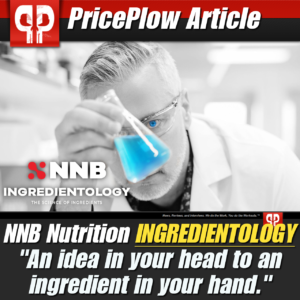
Have an ingredient idea? Team NNB will co-develop it with you -- see our "Ingredientology" article for more information!
If you're interested in supplementing with Rhodiola, we highly suggest considering RhodioPrime 6X to feel the power of an extract that's actually high in salidrosides. Of course, combining it with a standardized Rhodiola rosea extract may bring the best of both worlds, but salidroside is arguably the underrated key to rhodiola's next-level success.
Similar to how we suggest using CurcuPrime (tetrahydrocurcumin) to augment curcumin, RhodioPrime 6X could be used to test the research-supported effects of salidroside on its own, or even amplify the salidroside content of a Rhodiola rosea extract.
As explained in our NNB Nutrition Story, ingredients from NNB consistently push the envelope, moving past what's "typical" by asking, "How can we make it better?"
See NNB Nutrition's RhodioPrime 6X Whitepaper
NNB has also published a whitepaper detailing the known mechanisms and research on rhodiola, with some additional details on RhodioPrime 6X.[73] Most of the science is already covered above, but for a good PDF with most information you need to take your next step in rhodiola supplement formulating, see the file attached in the citation.[73]
This ingredient, a 100% pure, highly potent formulation of salidroside, is the latest iteration in a long line of advanced ingredients.
RhodioPrime 6X in one minute:
Regulatory: Is rhodiola compliant as a supplement?
Note: the following information is not to be construed as legal advise. Always consult with a regulatory lawyer and have labels and claims reviewed before manufacturing any type of dietary supplement.
As explained above, Rhodiola has been used for many centuries, and is an ingredient found in the food supply, qualifying it as a botanical ingredient in 1994 DSHEA.
But going further, since Rhodiola was marketed as a dietary supplement before 1994, it is considered an "old dietary ingredient" (ODI), and is grandfathered in as a supplement ingredient. You can see Rhodiola listed in the United Natural Product Alliance's Old Dietary Ingredient List,[74] published in 1999.
Formulators can feel safe using Rhodiola extracts, but are always wise to consult legal experts regardless of the above information. There have been warning letters sent concerning claims made about Rhodiola, but note that those supplements were often mixed with non-compliant ingredients. As always, see a qualified legal expert so you can safely get the most out of this incredible ingredient.
All PricePlow Articles Mentioning Rhodiola
Note: This article was originally published on November 24, 2020 and updated in June 2023 with new research on hormesis and gut health.
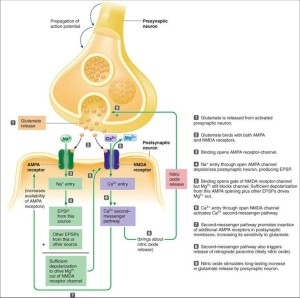
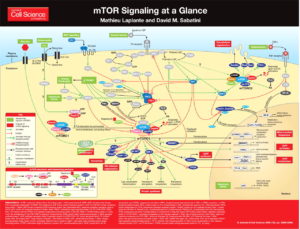
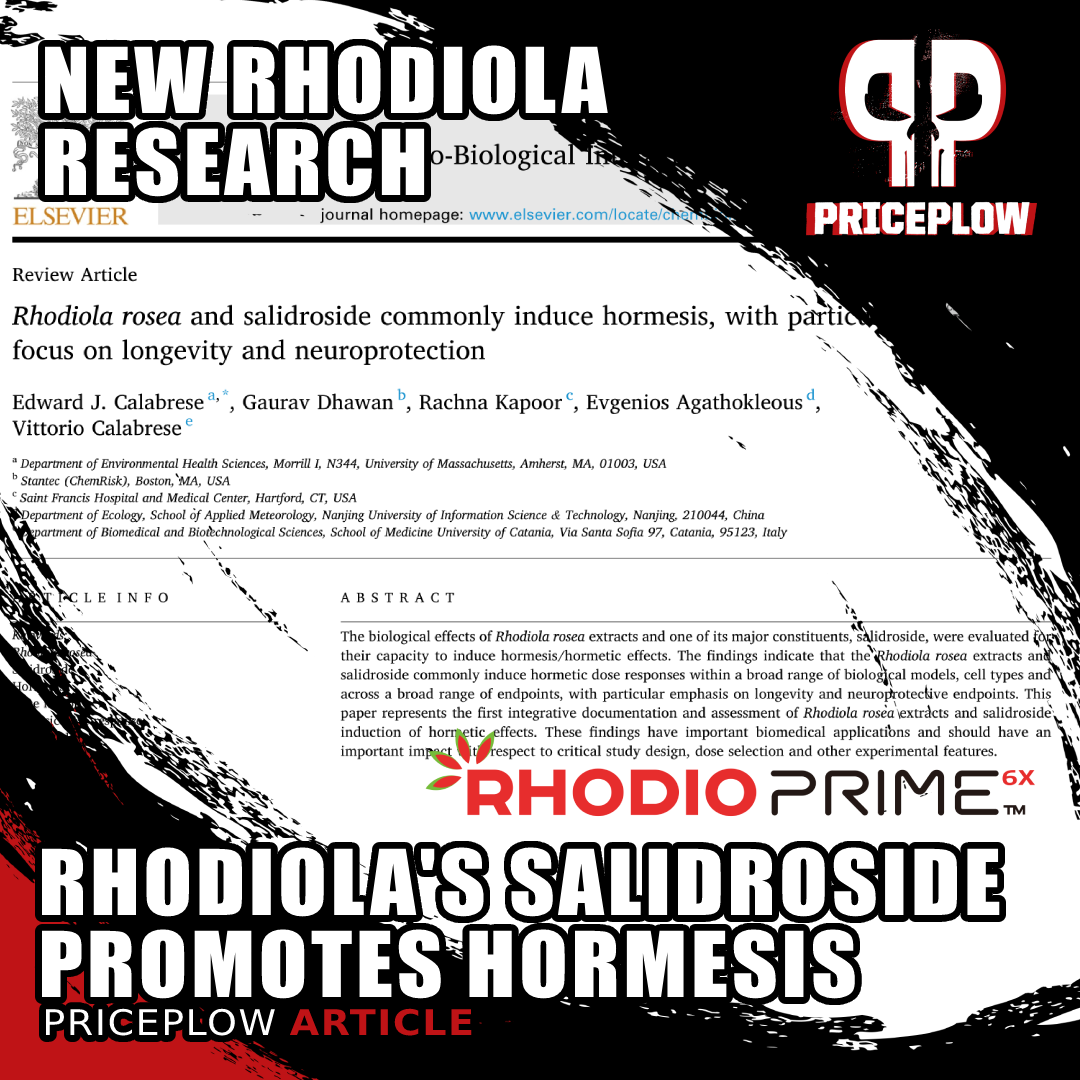
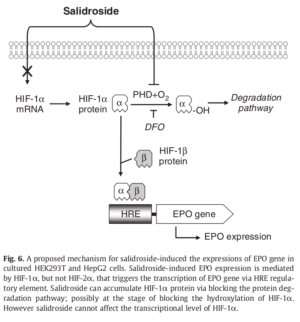
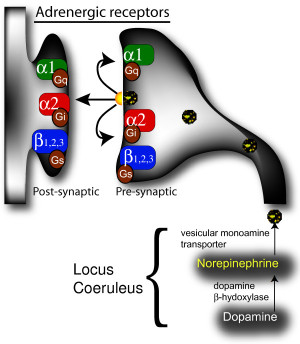
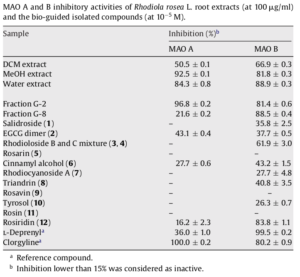
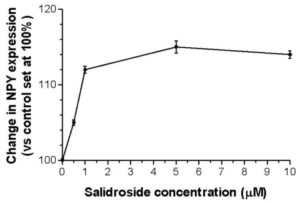
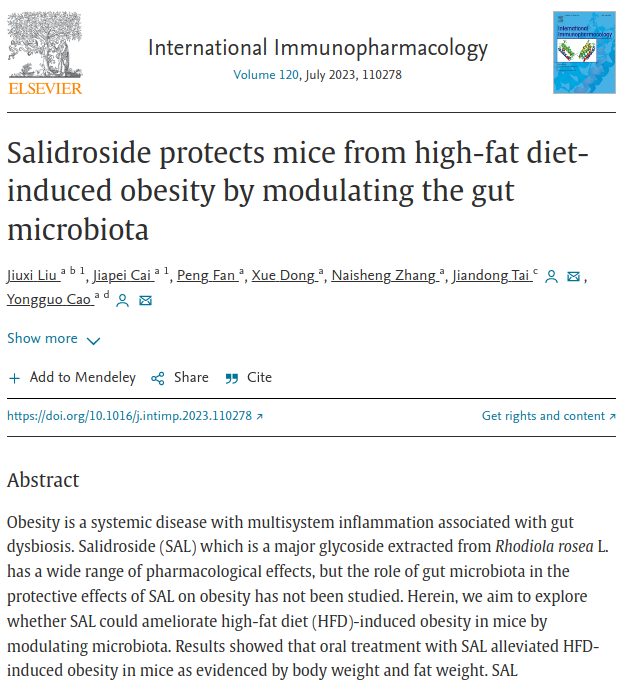
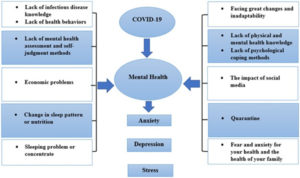
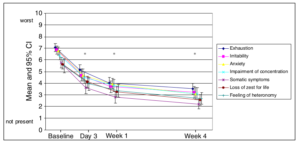
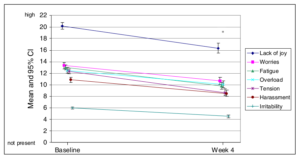
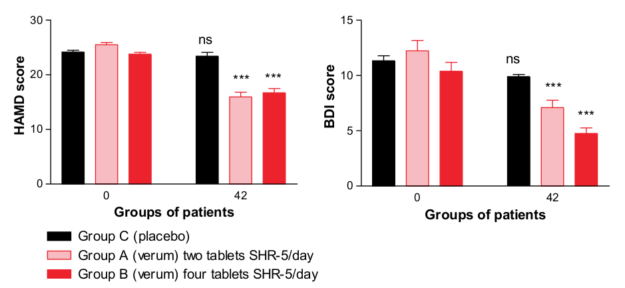
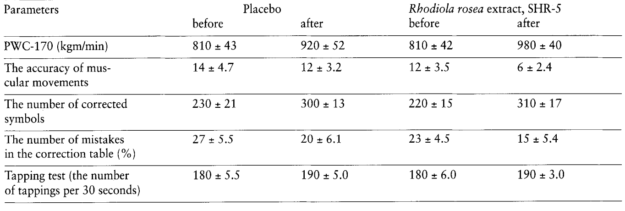
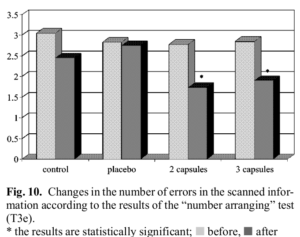
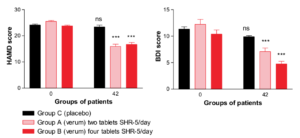
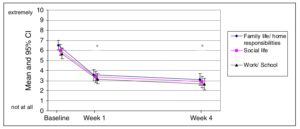
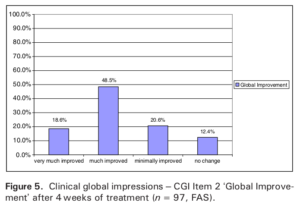


Comments and Discussion (Powered by the PricePlow Forum)